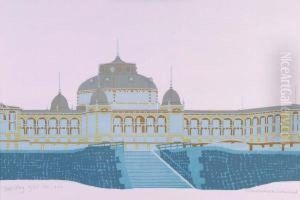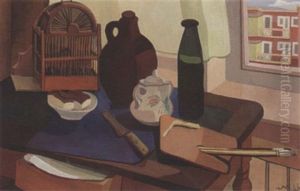Hans Van Mastenbroek Paintings
Hans van Mastenbroek was born on September 4, 1875, in Rotterdam, Netherlands. He grew up in an era when the Dutch art scene was teeming with innovation and was strongly influenced by movements such as Impressionism and later, Modernism. From a young age, van Mastenbroek exhibited a keen interest in the arts, and his talent was evident early on. He pursued his passion by studying at the Academy of Visual Arts in Rotterdam, where he honed his skills and developed his distinct style.
Van Mastenbroek is best known for his evocative landscapes and cityscapes, capturing the essence of Dutch life and scenery. His works often depicted the waterways, harbors, and bustling streets of Rotterdam and other Dutch cities, rendered with a remarkable sense of atmosphere and light. His technique was characterized by a delicate balance between detail and impression, allowing him to capture both the mood and the moment with striking clarity.
Throughout his career, Hans van Mastenbroek remained deeply connected to his Dutch roots, and his art reflects a profound love and understanding of the landscape and culture of the Netherlands. He was particularly adept at portraying the interplay of light and water, a theme that recurs throughout his oeuvre. His paintings, characterized by their luminous quality and meticulous composition, earned him a place among the prominent Dutch artists of his time.
Despite the changing artistic trends of the early 20th century, van Mastenbroek's work retained a consistent focus on the beauty of the Dutch landscape and urban environment. He exhibited widely, both in the Netherlands and internationally, gaining acclaim and a following for his distinctive approach to landscape painting.
Hans van Mastenbroek passed away on December 10, 1945, leaving behind a rich legacy of art that continues to be celebrated for its contribution to Dutch national identity and its portrayal of the Netherlands' unique environment. His works are held in numerous public and private collections, serving as a testament to his enduring impact on the Dutch art scene and his mastery of capturing the essence of his homeland.

